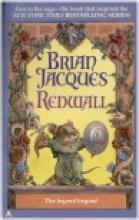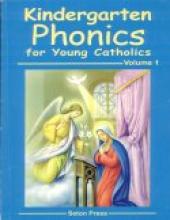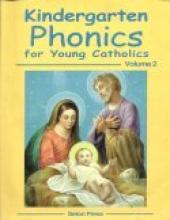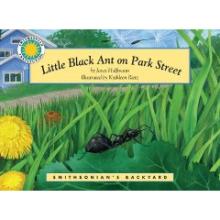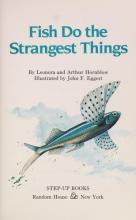No name
Redwall
Redwall (additional review)
One of the abbey mice, Matthias becomes an unlikely hero, rescuing captive field mice, solving mysterious riddles of prophecy, fighting warlike sparrows, killing a huge adder and finally facing and defeating Cluny in one last show-down. Most of this action does not take place in defense of the abbey but on Matthias' quest for the famous sword of an ancient defender of Mossflower: Martin the Warrior. Through one of the prophecies Matthias discovers that Martin had foreseen the days of the rats' attack and Matthias' heroic part of it. He had hidden the sword for Matthias to find and Matthias feels the safety of the abbey rests on this sword alone. Of course it isn't where Martin left it so Matthias must go questing to find it.
When I first read this book several years ago, I was greatly disappointed. It received rave reviews in book catalogs and from 4th and 5th grade teachers everywhere. But, I found the story much too obvious and the writing weak. The dialogue was a distasteful modern sarcastic banter. The plot was full of too many coincidences and no real surprises. The hero showed no signs of heroic virtue, or any other virtue, before he took a central role in the defense of the abbey.
Recently, through the urging of some friends of my children, my husband and I read Redwall aloud to our children. To my surprise, the story, brought to life by my husband reading the voices, was not as stale as I had first thought. The children loved it. Yes, Matthias had no great obvious character from which to draw his heroism but that made him more loveable to my children. He was an ordinary, awkward nobody who rose to greatness and defeated the greatest of evils. He was like them, and yet found the ability to wield a sword. This afforded a great opportunity for discussion about the source of our strength for battling evil.
Fortunately, while they play Matthias and company, they haven't forgotten Jim Hawkins or Peter, Susan, Edmund and Lucy. While I thought the book a somewhat inferior literary effort, it has continued to increase their excitement about reading and storytelling and has not ruined their taste for finer pieces.
Kindergarten Phonics for Young Catholics
Unit one has twenty five lessons. The first eleven are Listening skills (stories and poems), Visual Discrimination (broad similarities, detailed similarities and detailed differences), and Motor Skills (straight and curved lines, detailed dashed, detailed straight, and slanted lines and geometric shapes).
The next nine lessons are on auditory/visual discrimination. There are then three lessons on visual discrimination involving capital and lower case letters, letter identification and tracing. Then there is a another motor skills lesson and one on nursery Rhymes.
Unit Two is the beginning of learning phonics. The first few lessons are on the alphabet. Then on to letter recognition and identifying partner letters (capital and lower case). There are five lessons on motor and visuals skills.
After this the letter lessons begin. Each lesson begins with an intro to the letter. For example, the first letter taught is "S". So for "S" there are five lessons. The first is printing. The next: initial sound and printing. The third is letter discrimination. The fourth is initial sound and printing. The fifth and final lesson is final sound and printing.
Ther next letter taught is "T". After this there is a review of "S" and "T". After every two letters, there is a review of those two letters. After every four letters , there is a review of the four letters.
Unit Two covers the following letters: S,T,B,H,M,K,J,F,G,L, and D.
Kindergarten Phonics for Young Catholics
This volume begins with Unit three. It reviews the Alphabet sound list. Then it covers the following letters: N (including a N/M discrimination), W, C, R, P, Q, V, X, Y, Z. The lessons are the same setup as in Volume 1 (as explained above for the letter "S").
Unit four introduces the vowels. It begins by reviewing the consonants. Then it introduces Short "A". The lessons are as follows for Short "A". First is: recognizing the short sound of Aa. Then Short Vowel Aa. Then blending consonants with the short sound of Aa. Then Short Vowel Aa. Finally the short Aa sound in sentences. This is repeated for Short E, I, O and U. There are reviews after every two vowel sounds taught.
Unit 5 begins by reviewing consonants and short vowels. Then it teaches the two sounds of "C" and "G". Then it begins the long vowels.
It begins in with A. The lessons go as follows: First recognizing the long sound of Aa. Then discriminating between long and short A. Then blending consents with long A. Then again recognizing sound of the long and short A. Then it goes on to E, I, O, U long vowels. Reviews after *each* vowel.
The next section teaches consonant blends like SM, CR, PL, TR, GL, ST as initial sounds. Then final sound consonant blends like CK, NG, MP, SK, NK, and ST. Then the digraph TH is taught and the difference between T and TH.
The final section of volume two is about Y as a vowel. There are three lessons here involving Y with A, with E, and with I in one or two syllable words. The final two lessons are reading a little story about a puppy and answering questions for comprehension.
Shakespeare Can Be Fun series
Little Black Ant on Park Street
Birds do the Strangest Things
Twenty-two stories of the natural but strange and fascinating behavior of various birds. The text covers ostriches, hummingbirds, kiwis, loons, peacocks, emperor penguins, woodpeckers and much more. The text is somewhat lengthy (approx. 12-20 lines per page), but in fairly large print and at a fairly easy reading level. My children find this book completely fascinating. Part of the "Step-Up" series which includes "Meet George Washington" et al.
Fish do the Strangest Things
An informative and enjoyable collection of stories about some very interesting and remarkable fish – such as the Deep Sea Angler, the Archer Fish, the Lungfish, the Puffer Fish and the Mud-Skipper. Although the illustrations aren't fabulous, this book and others in the series have been real favorites with my children. The stories are engaging, fairly short (two to three pages with rather large type) and the content is very appealing. We discovered this book when my daughter was five and for her it became a starting point for a real interest in Sea-Life in particular and Science in general.

